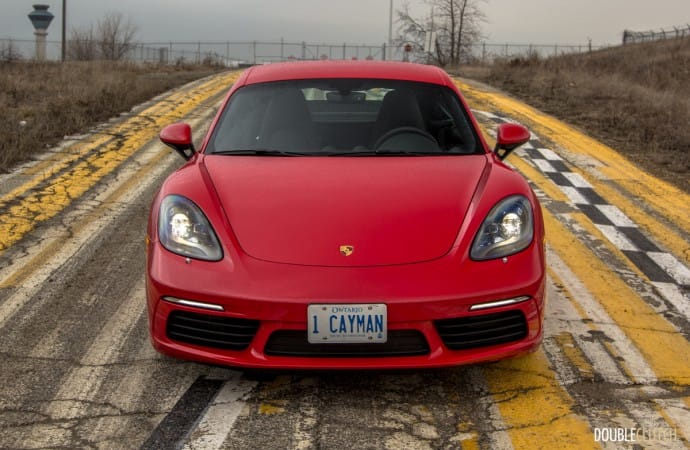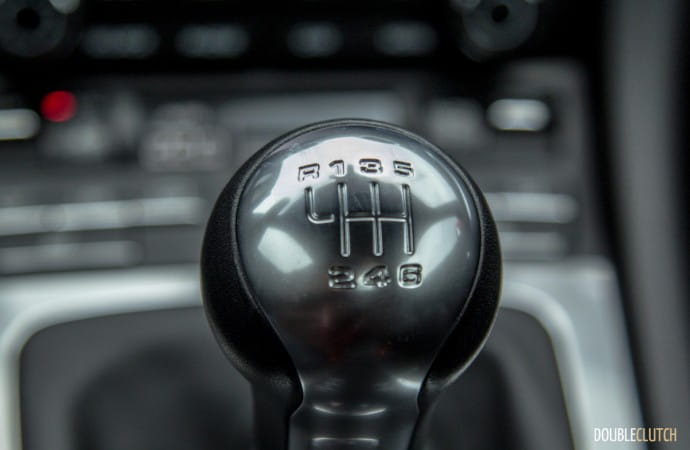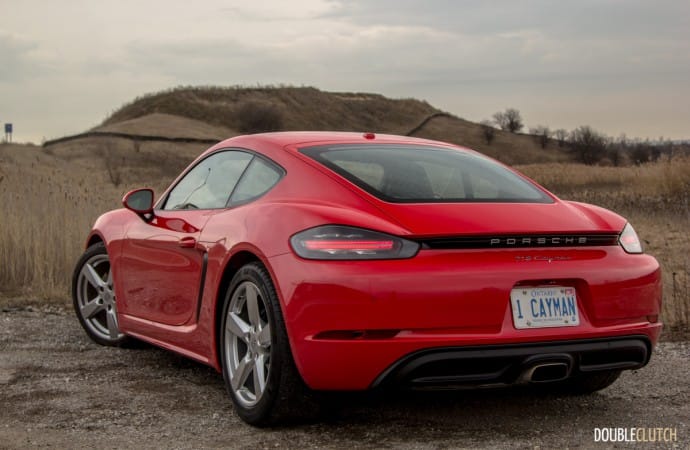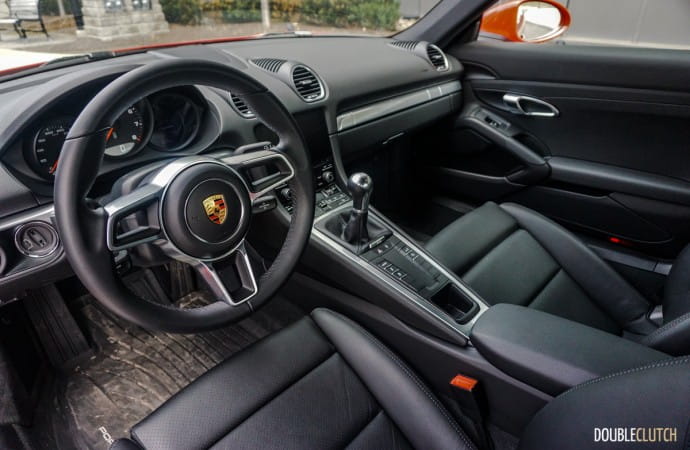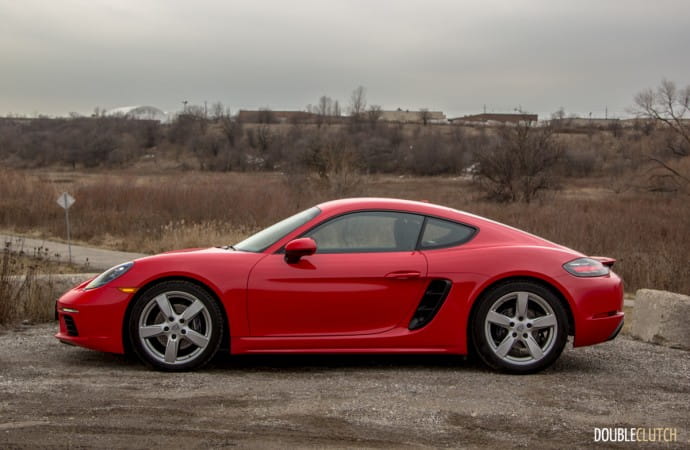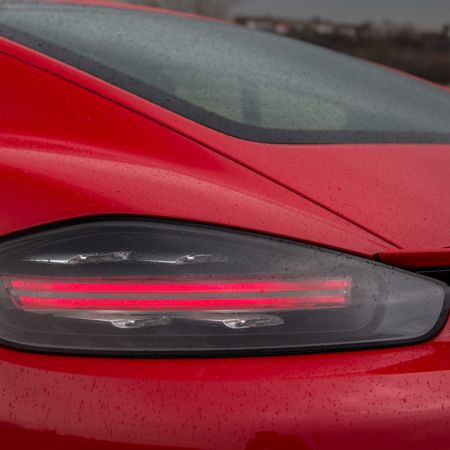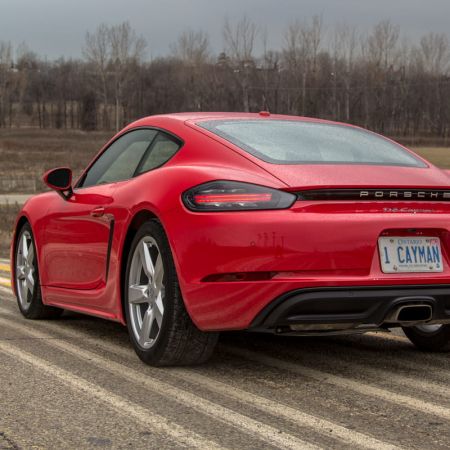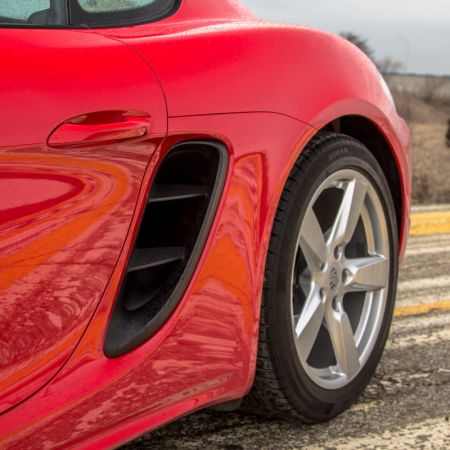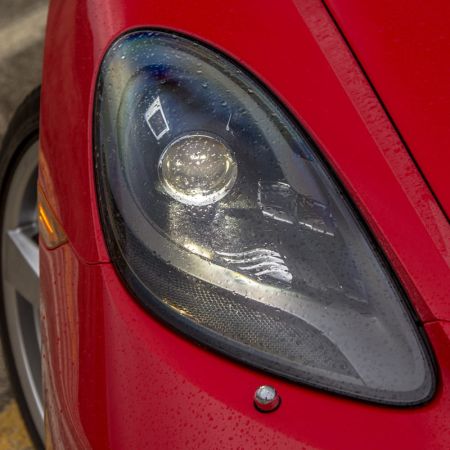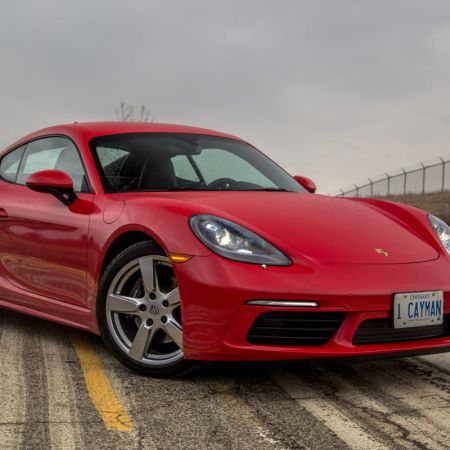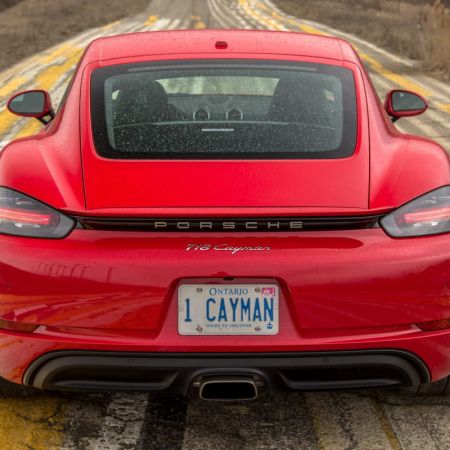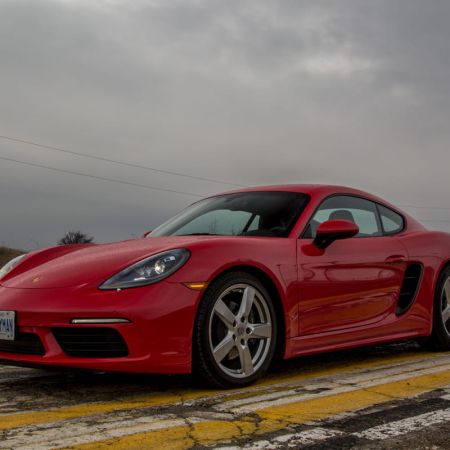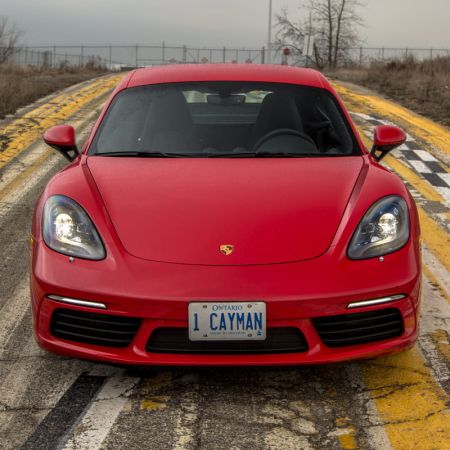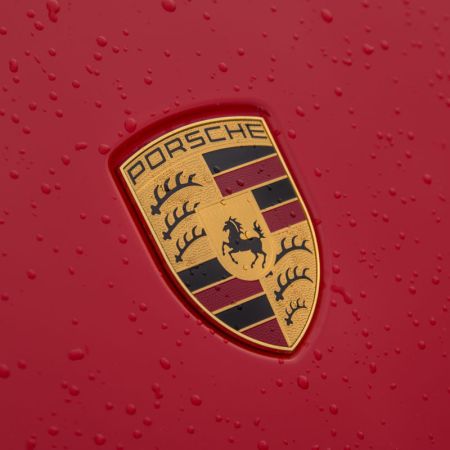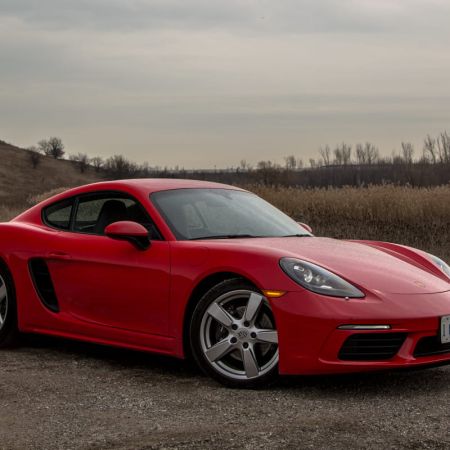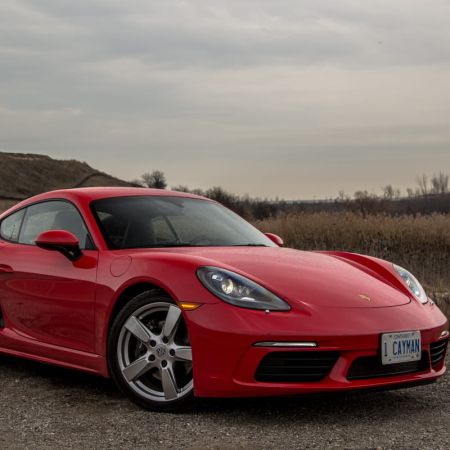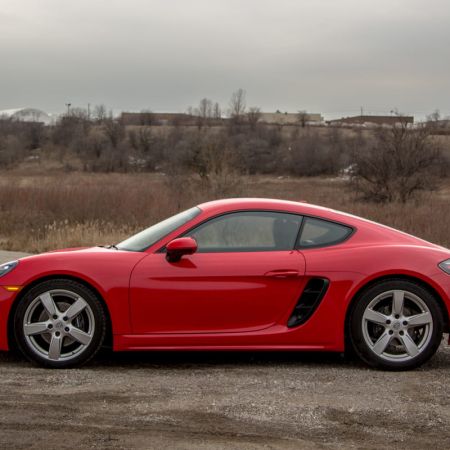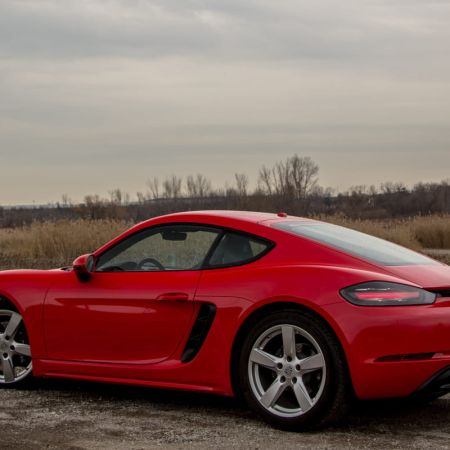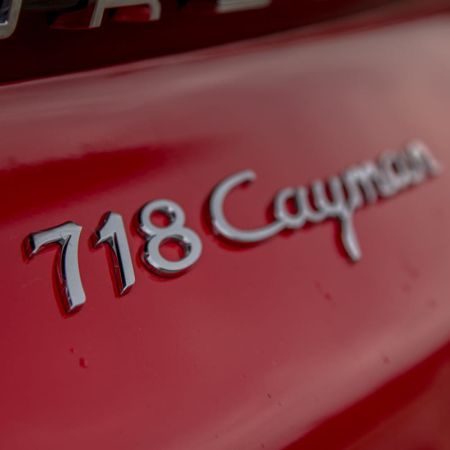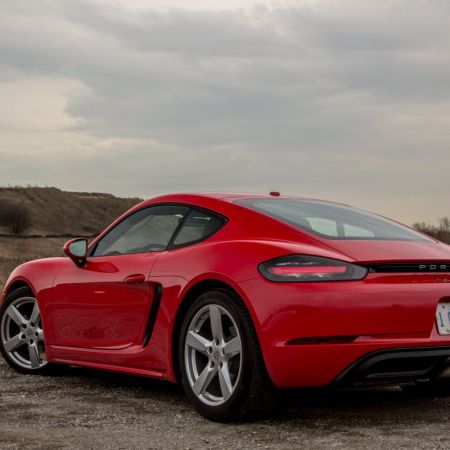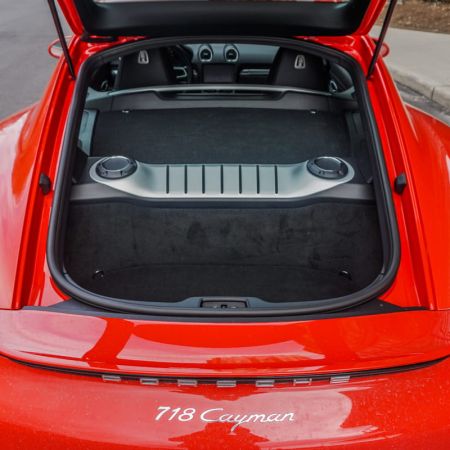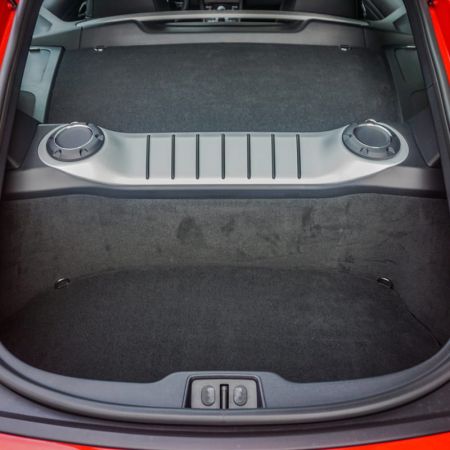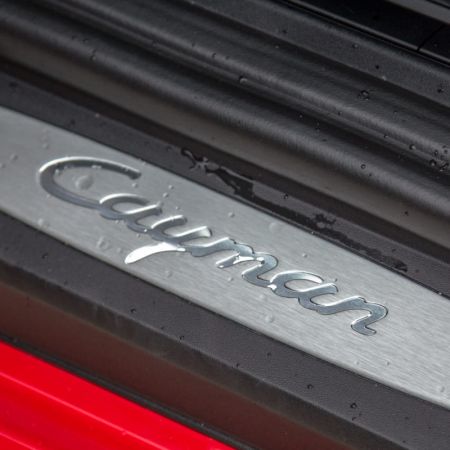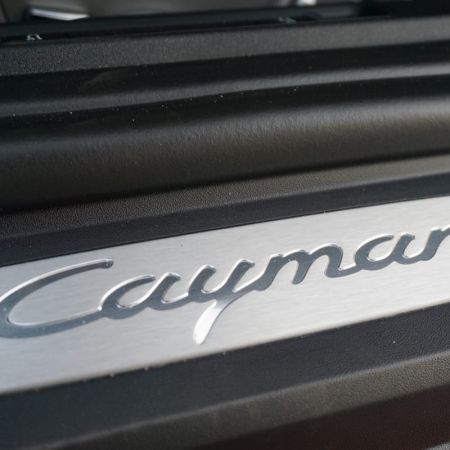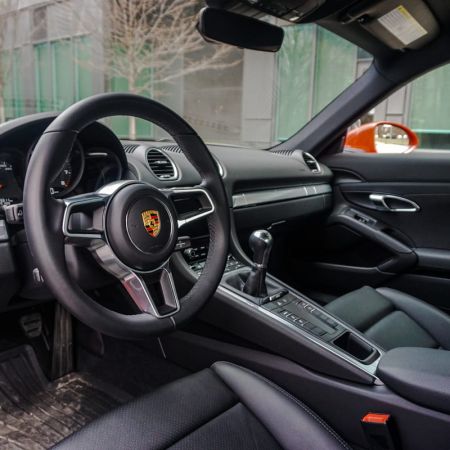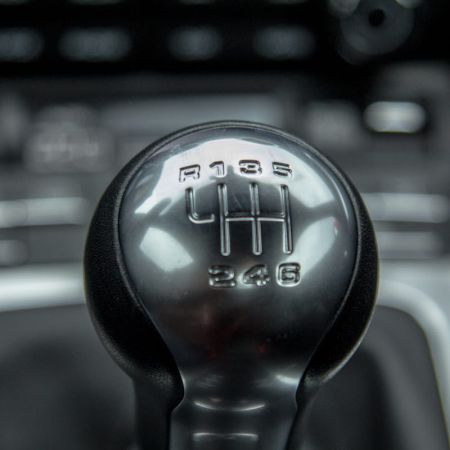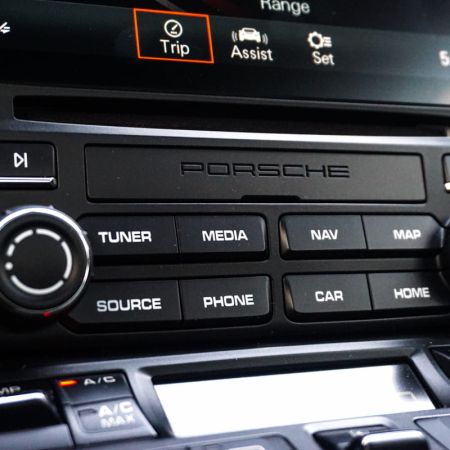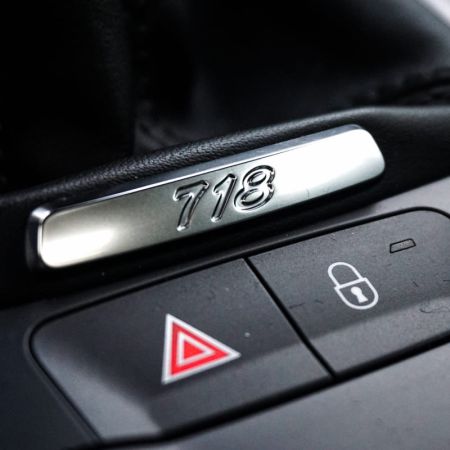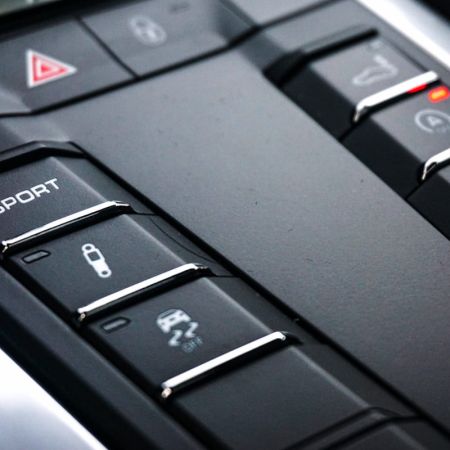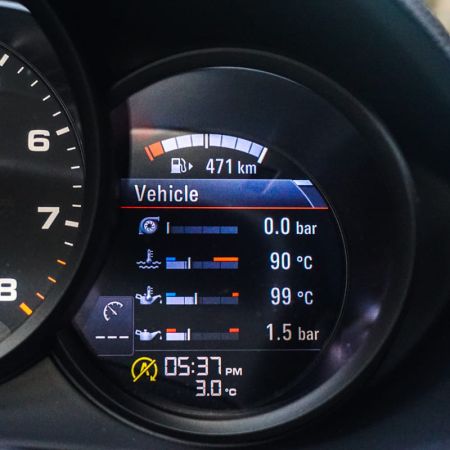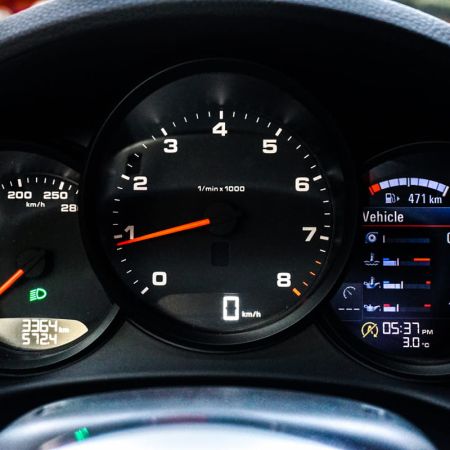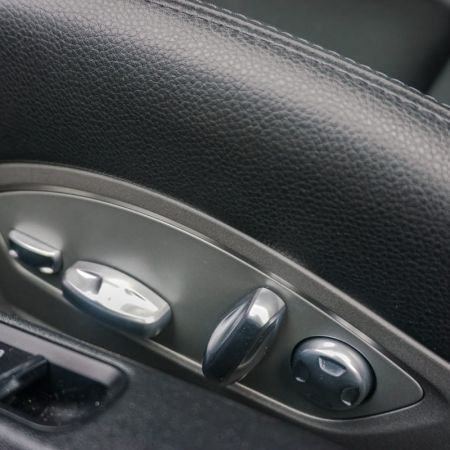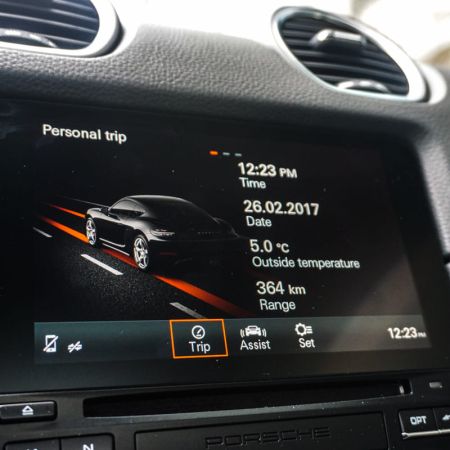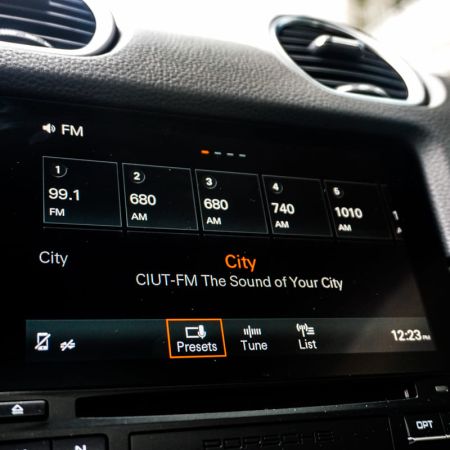The dead of winter is enough to suck the soul out of any car enthusiast. In our industry, winter often implies delegation to review all-wheel-drive vehicles, with many crossovers and SUVs in our garages at any given time. Porsche sees things differently, and has full faith in their lineup’s ability to handle rough conditions with little more preparation than a solid set of winter tires. It just so happened that our road test of the 2017 Porsche 718 Cayman, painted in the classic Guards Red, took place during a freakishly warm week in the month of February.
We first saw the Cayman name in 2005 as a 2006 model, a stunning fixed-roof coupé based on the popular Boxster. Always having sported its traditional mid-engine, rear-drive layout, the Cayman became a popular choice for many. Its light weight, unmatched balance and Porsche precision allow pre-owned Caymans to command good money on the pre-owned market, too. This year, a new model was introduced, complete with a new name. The car in question is the 2017 Porsche 718 Cayman, which gets a major revision including all-new powertrains.
It’s no secret by this point that Porsche is transitioning to an all-turbocharged lineup, and the 718 Cayman is no exception to this. Sharing its engine options with the 718 Boxster (reviewed here), this entry-level model is powered by a horizontally opposed 2.0L flat four-cylinder engine, turbocharged and intercooled. This model is good for 300 horsepower at 6,500RPM and 280 lb-ft of torque at 1,950RPM. Equipped in the spec that our test vehicle is, the 718 can sprint from a standstill to 100km/h in just 5.1 seconds. PDK dual-clutch models can see numbers as quick as 4.7 seconds, which is excellent.
Two transmissions are offered, and there’s no poor decision between either one. The seven-speed PDK dual-clutch gearbox is the one that most buyers will opt for, at least as far as the Canadian market is concerned. This 718 Cayman was equipped with the six-speed manual, with some of the most mechanical, pure feel available in the industry today. The clutch has a very defined bite point, and the shifter falls into place effortlessly with confidence. Rev-matches become second nature almost instantaneously, and pedal placement is good for heel-toe downshifts.
There is minimal turbocharger lag evident, and this engine always feels peaky and ready to go thanks to its 19 psi of boost – the 718 Cayman is deceptively fast. Everything is so natural and feels so planted that it’s very easy to become one with the car. Steering is electrically assisted, but has the precision of a surgeon’s scalpel. The Cayman goes exactly where it’s pointed, and weight distribution means handling is the closest thing to perfect we’ve driven in a very long time. The faster-ratio steering is sourced from the 911 Turbo, and that explains a lot. In favour of weight savings and to jive with the rest of the segment, no all-wheel-drive is offered.
During our test of the vehicle, our readers and friends continuously asked us how the four-cylinder Cayman felt, simply because of how iconic the sound and feel of the outgoing flat-six resonated with owners and enthusiasts alike. It’s a bit peculiar and unfamiliar at first, but by no means does the car sound like a Subaru. At idle, it almost sounds like a classic air-cooled Porsche. When “Sport” mode is engaged, the idle RPMs rise ever so slightly, and the center-mounted exhaust becomes a touch more audible. If the sound still doesn’t get your heart racing (it definitely worked for this writer…) there’s a Sports Exhaust setup that can be equipped.
Regardless of road conditions, the ride quality on the 718 Cayman is well sorted. The 2,475mm wheelbase and sharp chassis tuning deliver precision and delivery. We managed just fine during our road test through a surprisingly warm week in February, but the low ground clearance of the car may present some issues if deep snow is in the forecast. The Porsche Torque Vectoring (PTV) uses a locking diff that works in combination with the brakes to help with handling even more, and the Porsche Active Suspension Management (PASM) does a delightful job of keeping the car planted at all times.
Porsche rates the 718 Cayman with the six-speed manual transmission at 11.0L/100km in the city and 8.3L/100km on the highway. Driving the car very conservatively and trying to maximize efficiency resulted in numbers as low as 8.4L/100km, though our test average over about 600km of driving was 10.9L/100km. In typical Porsche fashion, the fuel door is located just in front of the passenger side door, and the tank will hold 54L of 93-octane premium fuel. The Cayman S with the larger 2.5L motor has a larger, 64L tank.
From a visual standpoint, this new car is unmistakably a Porsche, though it’s significantly updated from its predecessor. Still on the 981 chassis, the car somehow becomes prettier and more reflective of its larger 911 Carrera (reviewed here) sibling. All-new fenders front and rear are more muscular, and the fascia is re-tooled as well. New headlights get the signature four-LED setup (our car was equipped with bi-xenons, as well), and Porsche has made the intakes behind the doors a bit larger, as well. It’s not a departure at all from the traditional Cayman/Boxster styling, but aficionados will immediately be able to identify this car from its predecessors.
The interior of the Cayman is completely driver-centric, with minimalism expressed in the most elegant way. This particular model was equipped with the base steering wheel, as a sport wheel is an additional option. What this means is that no steering wheel audio controls are present, and you can actually poke your fingers through each of the spokes. This is a good thing – minimal fuss. The dual-zone climate control is easy to modulate, and the configurable information screen on the instrument cluster is similar, toggled by a stalk off the steering wheel.
PCM (Porsche Communication Management) has been updated significantly for the 718 Cayman and Boxster, and this system is now trickling down into the rest of the lineup – we sampled it in the Macan (reviewed here) earlier this year. The touchscreen is very responsive, has a nice matte finish with clean fonts and vibrant colours, and even destination entry on the factory navigation is more than acceptable. We recommend opting for the “Connect” option, which, for $1,130, adds Apple CarPlay compatibility and a smartphone tray in the car. Honestly, for the price this car commands, this should be standard, but the built-in setup includes Bluetooth, USB, and is good enough for most.
Pricing for the 718 Cayman starts at a remarkably palatable $61,500. There is no extra cost for the Guards Red paint, though our car had some “must-have” options checked off. Porsche Torque Vectoring (PTV) is $1,510, Porsche Active Suspension Management (PASM) is $2,050, and the Premium Package that includes the power 14-way Sport Seats is $1,570. This package also adds heated seats, dual-zone auto climate control, and auto-dimming mirrors. Adding navigation to the standard PCM infotainment is $1,980, and the 19” Cayman S wheels equipped on our car were $1,810. The total sticker on this test vehicle was just $73,070 – a compelling price.
The bottom line is, this is one of the finest sports cars that can be had for less than $100,000. Its price point puts the 2017 Porsche 718 Cayman in line with some seriously tempting players, such as the BMW M2, the Alfa Romeo 4C (reviewed here), and even the Jaguar F-Type. In the past, the Cayman has been dismissed by the ignorant as the “poor man’s Porsche”, which is not the case in the slightest. If track days and everyday thrills are a priority, and you don’t need the rear seats of the 911, the fixed-roof 718 Cayman is a relative bargain with plenty to offer.
2017 Porsche 718 Cayman Gallery
See Also:


